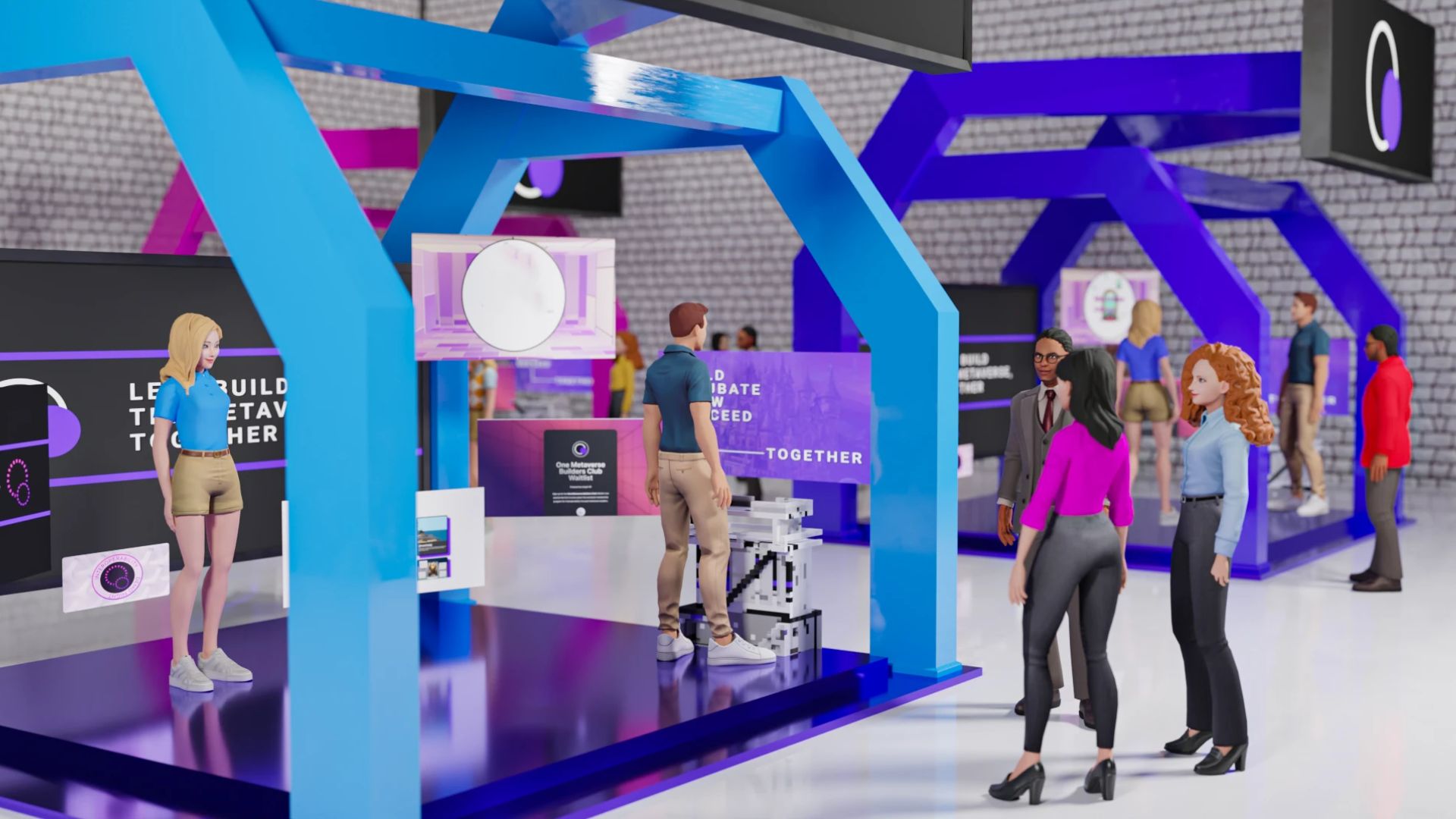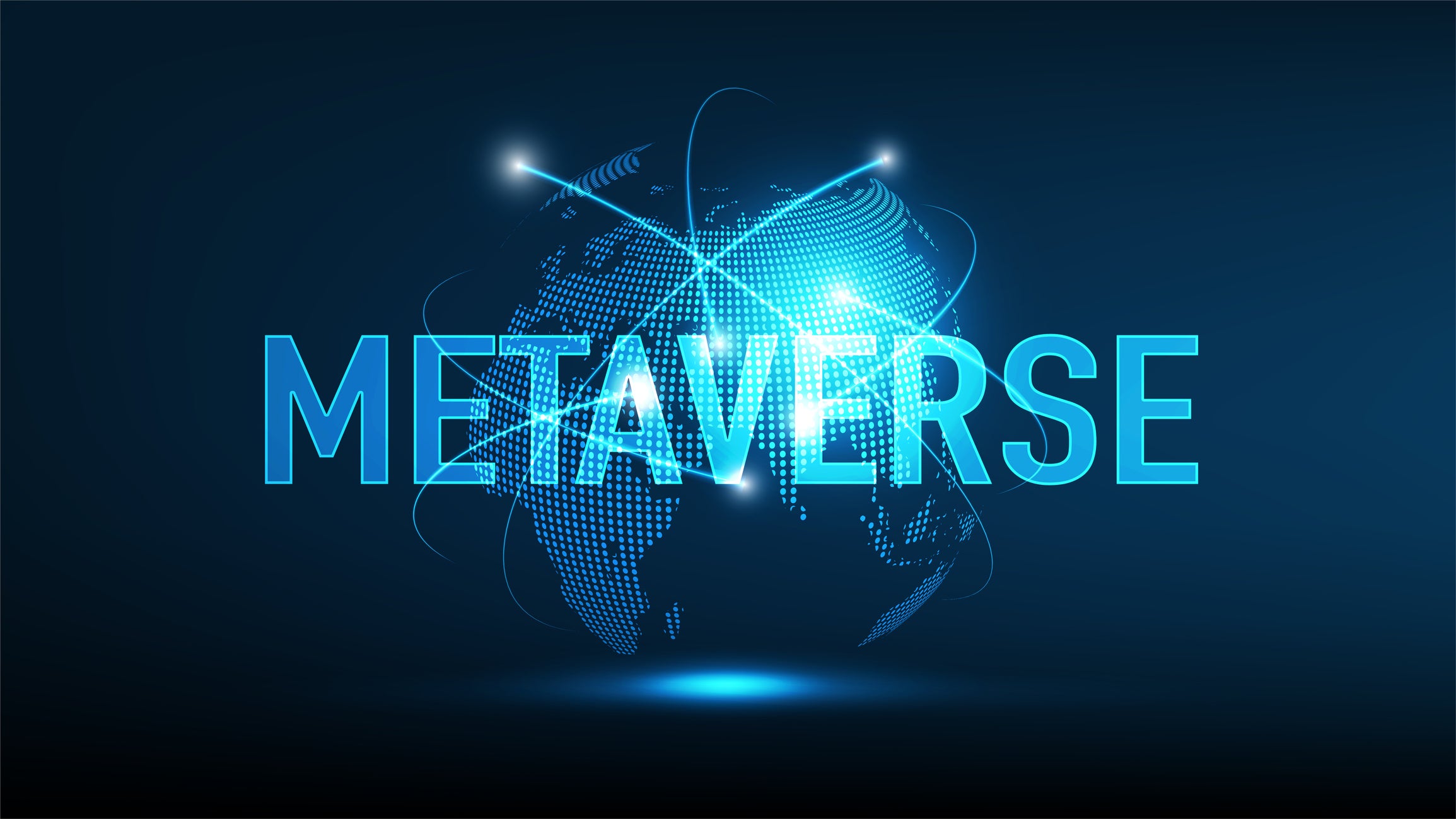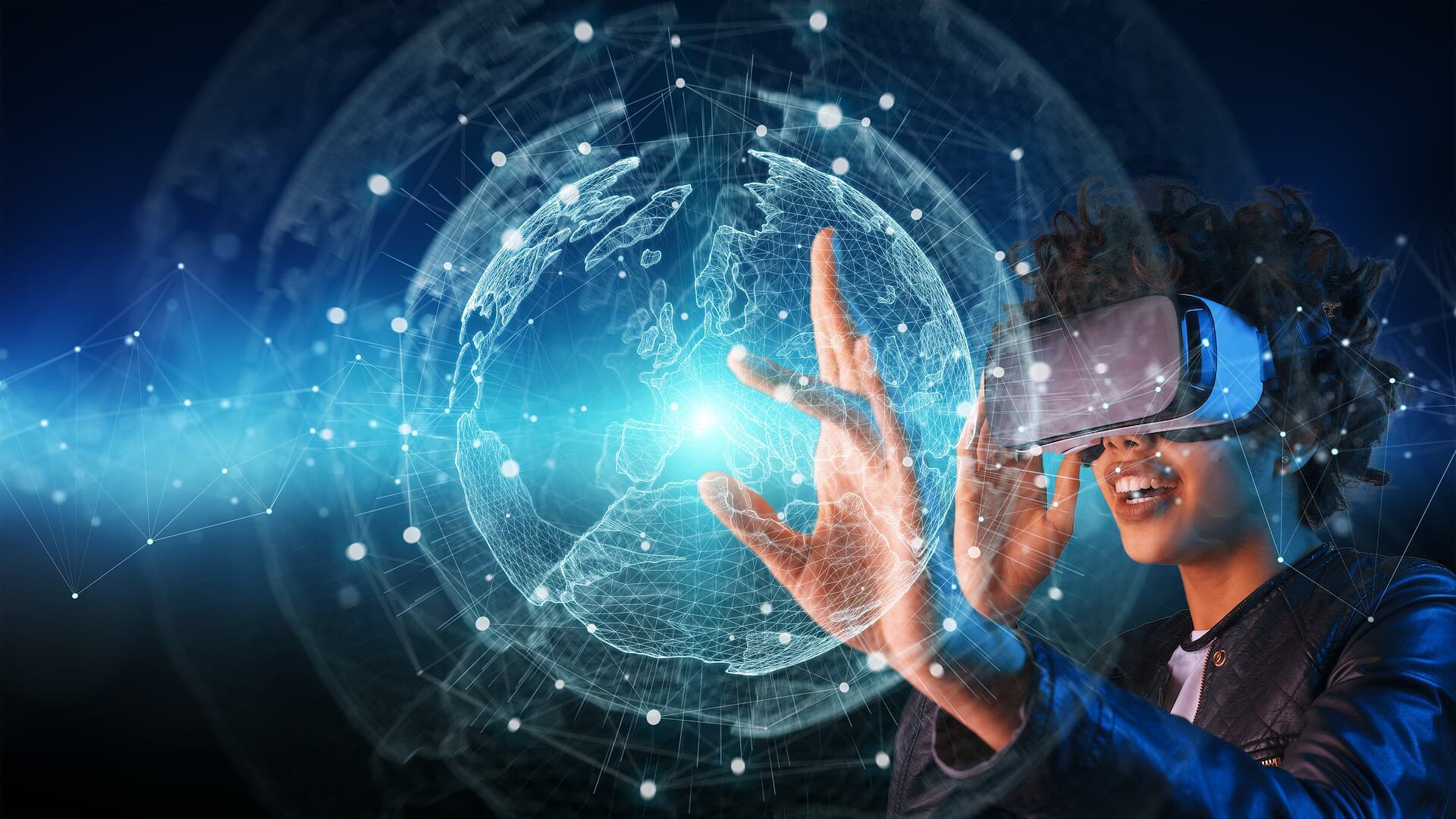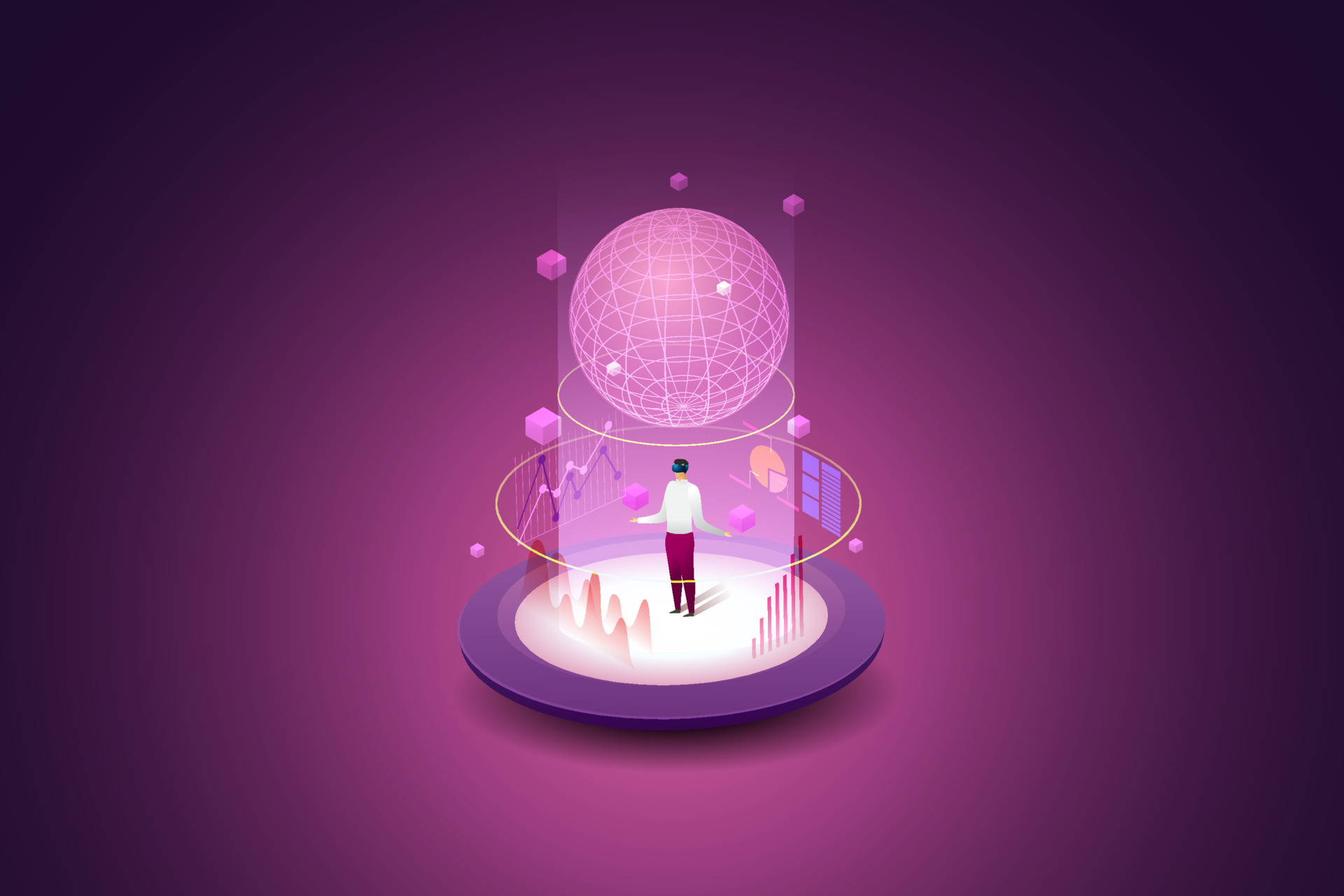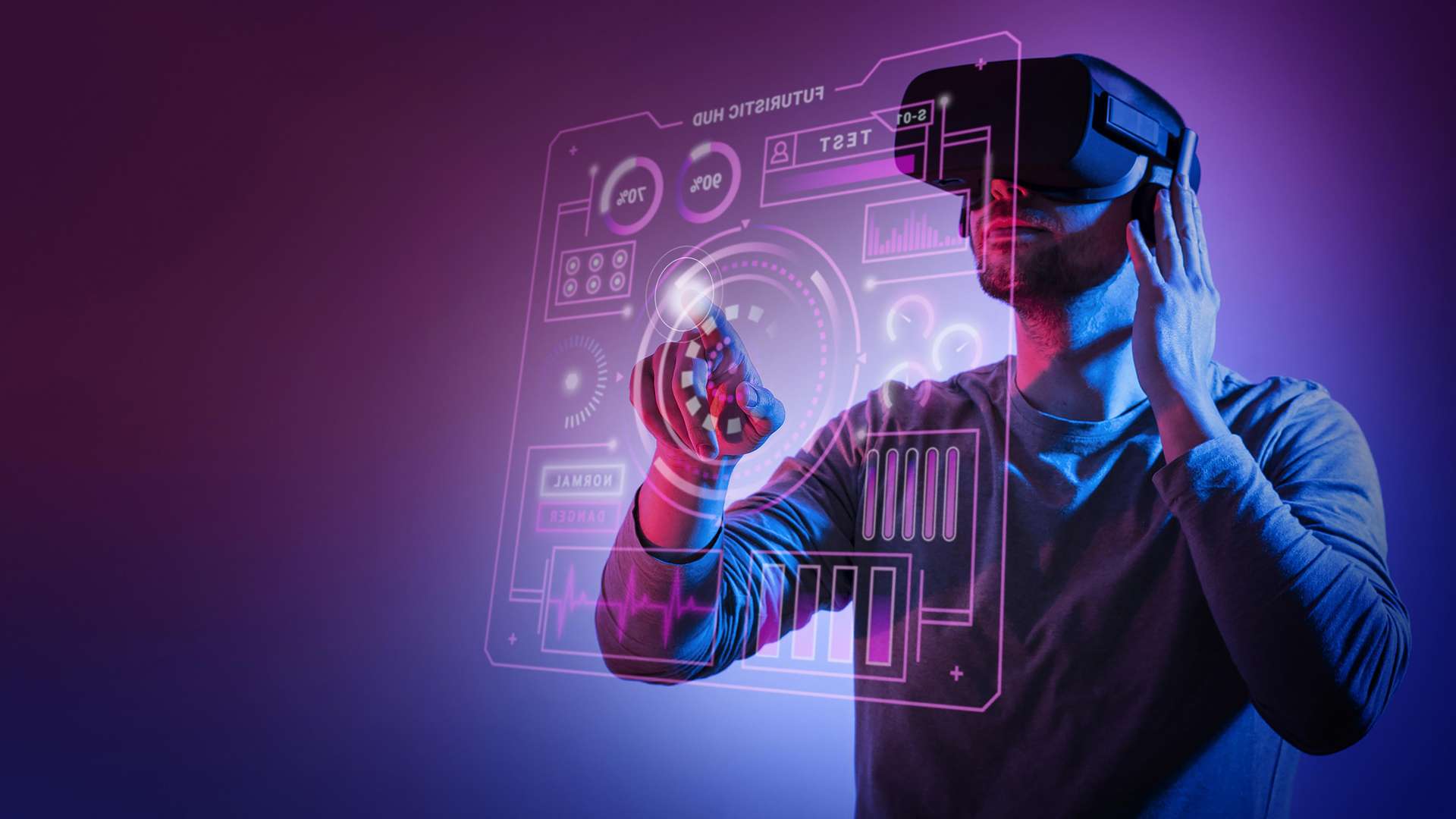Introduction
The concept of the metaverse has been gaining significant attention recently, sparking a lot of curiosity and excitement. It has even become a buzzword in the realms of technology and virtual reality. But what exactly is the metaverse? How does it differ from the virtual worlds and online communities we are familiar with today?
The metaverse can be defined as a virtual reality space where users can interact with a computer-generated environment and other users in real-time. It goes beyond simple immersion and aims to create a fully immersive and interconnected digital world. It offers the potential for limitless possibilities, where people can work, play, explore, and socialize in a way that blurs the line between the physical and virtual realities.
This concept is not entirely new. Science fiction novels and movies have long portrayed the idea of a fully realized virtual universe. However, recent advancements in virtual reality technology, augmented reality, and blockchain have brought the metaverse closer to reality.
The metaverse has the potential to revolutionize many aspects of our lives. It could change the way we work, learn, communicate, and entertain ourselves. Imagine attending a virtual meeting in a virtual office or exploring historical landmarks in a virtual tour. The possibilities are endless and limited only by our imagination.
Moreover, the metaverse has the power to reshape the economy. It opens up new opportunities for virtual marketplaces, where users can buy and sell digital assets, virtual real estate, and even services. The use of blockchain technology ensures transparency, security, and ownership of these digital assets within the metaverse.
While the development of the metaverse is still in its early stages, several key features will define its essence. This article will explore these defining features of the metaverse, including the impact of virtual reality, the role of augmented reality, virtual economies, interconnectivity, social and collaborative features, openness, and personalization.
Definition of the Metaverse
The metaverse is a term used to describe a virtual reality space where users can interact with a computer-generated environment and other users in real-time. It represents a fully immersive digital world that goes beyond what we currently experience in virtual worlds and online communities. In the metaverse, users can work, play, explore, and socialize, blurring the boundaries between the physical and virtual realms.
What sets the metaverse apart from traditional virtual reality experiences is its interconnectedness and continuity. It offers a seamless, persistent environment that allows users to move between different virtual spaces without any interruption or loss of data. This means that you could start your day in a virtual office, attend virtual meetings, explore virtual cities, and then relax in a virtual park, all without ever leaving the metaverse.
Furthermore, the metaverse aims to create an environment that is not limited by the constraints of the physical world. In the metaverse, users can defy gravity, bend the laws of physics, and create and shape their own realities. It offers a level of freedom and creativity that is unparalleled in the physical world.
Another defining aspect of the metaverse is its ability to support a vast number of users simultaneously. Unlike current virtual reality experiences that are limited by technical constraints, the metaverse has the potential to host millions, if not billions, of users at the same time. This creates a vibrant and dynamic social ecosystem where users can interact, collaborate, and form connections with people from all around the world.
It’s important to note that the metaverse is not limited to just one platform or technology. It encompasses various technologies, including virtual reality, augmented reality, and even mixed reality. The goal is to create a unified, interconnected digital space that seamlessly integrates these different technologies and allows users to have immersive experiences regardless of the device they are using.
Overall, the metaverse represents a new paradigm in the way we interact with digital environments. It offers endless possibilities for work, play, entertainment, and socialization. As technology continues to advance, the boundaries of the metaverse will be pushed further, creating an even more immersive and interconnected digital world.
The Impact of Virtual Reality
Virtual reality (VR) is a key technology driving the development of the metaverse. It allows users to enter a completely immersive virtual environment, where they can experience things that would not be possible in the physical world. The impact of VR within the metaverse is significant and has transformative potential across various industries and sectors.
One of the most notable impacts of VR in the metaverse is in the realm of education and training. Virtual reality can provide realistic simulations and immersive experiences for learning, allowing students and professionals to gain hands-on experience in a safe and controlled environment. For example, medical students can practice surgeries in a virtual operating room, while engineers can test and refine their designs virtually before building physical prototypes.
VR also has the potential to revolutionize the entertainment industry within the metaverse. Imagine being able to attend live concerts, sporting events, or movie premieres without leaving the comfort of your own home. Virtual reality can transport users to virtual stadiums or theaters, providing an immersive and interactive experience that is almost indistinguishable from the real thing.
Additionally, VR can enhance social interactions within the metaverse. Users can meet and interact with others in virtual social spaces, attend virtual parties, or engage in multiplayer games. VR brings a sense of presence and immersion, allowing users to feel as if they are physically present with others, even if they are miles apart in the physical world.
Another significant impact of VR is in the field of therapy and mental health. Virtual reality can provide immersive environments for exposure therapy, helping individuals overcome phobias, anxiety, and post-traumatic stress disorder. It can also be used for relaxation and stress reduction, offering virtual environments that promote calmness and well-being.
While VR brings numerous benefits to the metaverse, challenges still exist. The cost of VR hardware remains a barrier for widespread adoption, and technical limitations such as motion sickness and discomfort still need to be addressed. However, as technology advances and becomes more accessible, the impact of virtual reality in the metaverse is expected to continue to grow, opening up new possibilities for immersive experiences and interactions.
The Role of Augmented Reality
Augmented reality (AR) is another technology that plays a crucial role in shaping the metaverse. Unlike virtual reality, which immerses users in a completely virtual environment, augmented reality overlays digital information and virtual objects onto the real world. The integration of AR within the metaverse offers unique opportunities and benefits across various industries and experiences.
One of the prominent applications of AR in the metaverse is in the realm of navigation and location-based experiences. AR can provide real-time information and direction overlays, allowing users to navigate through unfamiliar places with ease. Imagine walking down a city street and seeing digital arrows and labels guiding you to your destination or discovering virtual landmarks and hidden treasures as you explore your surroundings.
AR also has the potential to transform the way we shop and interact with products. With AR, users can virtually try on clothes or accessories, visualize furniture and home decor in their living spaces, or even see how a new car would look parked in their driveway. These augmented shopping experiences not only enhance convenience but also provide a more personalized and engaging way to interact with products before making a purchase.
Furthermore, AR can significantly impact the fields of education and training within the metaverse. By overlaying digital information and interactive elements onto the physical world, AR can create immersive learning experiences. Students can explore virtual anatomy models, interact with historical figures, or conduct virtual science experiments, all within the context of their real-world surroundings.
AR also plays a vital role in social interactions within the metaverse. By using AR glasses or mobile devices, users can see virtual avatars, holograms, and digital content superimposed onto the real world. This allows for shared AR experiences, where multiple users can collaborate, create, and engage with virtual objects together. Imagine playing a virtual game of chess on your coffee table or collaborating with colleagues on a virtual project in your living room.
However, like any technology, AR also presents its challenges. The development of lightweight and comfortable AR devices, as well as the need for accurate spatial mapping and tracking, are ongoing areas of research. But as AR technology continues to advance, its role in the metaverse will undoubtedly grow, enriching our everyday lives with seamless and interactive digital experiences.
Virtual Economies and Blockchain Technology
Virtual economies have become a significant aspect of the metaverse, offering users the ability to buy, sell, and trade digital assets within the virtual space. These digital assets can range from virtual currencies and virtual real estate to virtual goods and services. The emergence of blockchain technology has played a crucial role in enabling secure and transparent virtual economies within the metaverse.
Blockchain technology, which serves as the backbone of cryptocurrencies like Bitcoin, provides a decentralized and tamper-resistant platform for recording transactions. This technology eliminates the need for intermediaries, such as banks or marketplaces, and ensures that ownership and transaction history of digital assets within the metaverse can be verified and tracked in a transparent manner.
One of the key benefits of blockchain technology in virtual economies is the concept of non-fungible tokens (NFTs). NFTs are unique digital assets that can represent ownership of virtual items, such as artwork, collectibles, or in-game items. With NFTs, users can prove ownership and authenticity of these digital assets, allowing for value exchange and investment opportunities within the metaverse.
Blockchain technology also introduces the concept of smart contracts, which are self-executing contracts with the terms of the agreement directly written into lines of code. Smart contracts automate the process of verifying, executing, and enforcing transactions, providing a secure and efficient way for users to engage in virtual economic activities within the metaverse.
Furthermore, blockchain technology brings a level of security and trust to virtual economies. The decentralized nature of blockchain ensures that transactions are resistant to hacking or tampering, reducing the risk of fraud and ensuring the integrity of the virtual economic system. Additionally, blockchain technology allows for greater user control and ownership over their digital assets, preventing them from being arbitrarily taken away or restricted by centralized authorities.
Virtual economies powered by blockchain technology also have the potential to bridge the gap between the physical and virtual worlds. For example, users can own virtual real estate within the metaverse and have the ability to trade, rent, or monetize these virtual properties. This opens up a new avenue for economic opportunities and entrepreneurship within the metaverse.
As virtual economies continue to evolve within the metaverse, blockchain technology will play a crucial role in providing the necessary infrastructure for secure and transparent transactions. It enables users to have ownership and control over their digital assets, fosters trust and reliability, and opens up new possibilities for economic activities within the virtual world.
Interconnectivity and Seamless Experiences
One of the defining features of the metaverse is its interconnectivity, which allows users to seamlessly move between different virtual spaces and have consistent experiences across platforms and devices. This interconnectivity is crucial in creating a unified and immersive digital world within the metaverse.
In the metaverse, users should be able to transition from one virtual environment to another without any interruption or loss of data. For example, you could start a game on your virtual reality headset and continue playing on your smartphone or computer, all while maintaining your progress and interacting with other users seamlessly. This level of interconnectivity ensures that users can have continuous and uninterrupted experiences within the metaverse.
Interconnectivity also enables social interactions to transcend individual platforms and extend across multiple virtual spaces. Users should be able to communicate, collaborate, and connect with others, regardless of the specific platform or device each person is using. This enhances the social aspect of the metaverse, fostering a sense of community and enabling shared experiences.
Moreover, the metaverse aims to provide consistent experiences across different platforms and devices. Whether you are using a virtual reality headset, augmented reality glasses, or a computer, the metaverse should offer a unified user interface and experience. This allows users to engage with the metaverse in a way that is most convenient and accessible to them, without sacrificing the quality or depth of their virtual experiences.
Interconnectivity and seamless experiences within the metaverse also extend beyond individual users. The metaverse should be able to connect and integrate with other digital systems and technologies, such as Internet of Things (IoT) devices or smart city infrastructures. This means that virtual objects within the metaverse can interact with real-world objects, enabling new forms of cross-reality interactions and applications.
However, achieving true interconnectivity and seamless experiences pose technical and logistical challenges. Standardization of protocols, data formats, and user authentication is crucial to ensure compatibility and interoperability across different platforms and devices. Additionally, maintaining data privacy and security while enabling smooth transitions and interactions within the metaverse is an ongoing concern that needs to be addressed.
Despite these challenges, interconnectivity and seamless experiences are key pillars of the metaverse. As technology continues to advance, the integration of virtual reality, augmented reality, and other immersive technologies will contribute to the realization of a fully interconnected digital world, providing users with seamless and immersive experiences across platforms, devices, and virtual spaces.
Social and Collaborative Features
One of the core aspects of the metaverse is its ability to foster social interactions and collaborative experiences. Unlike traditional online communities or social networks, the metaverse offers a more immersive and engaging platform for people to connect, communicate, and collaborate with others in virtual spaces.
Social features within the metaverse allow users to create and customize their digital avatars, representing themselves in the virtual world. These avatars can be uniquely designed and personalized to reflect the user’s preferences and identity. Users can interact with each other through voice, chat, and gestures, fostering a sense of presence and participation within the metaverse.
Collaboration is another key aspect of the metaverse, enabling users to work together and share ideas in virtual environments. With collaborative features, users can create and edit virtual documents, whiteboards, or 3D models, allowing for real-time collaboration and brainstorming sessions. This opens up new possibilities for remote work, virtual collaboration, and global teamwork.
Moreover, the metaverse encourages users to explore and join communities of interest. Whether it’s a group of gamers, artists, or professionals within a specific industry, users can connect with like-minded individuals and form communities within the metaverse. These communities offer opportunities for networking, knowledge sharing, and even hosting events or conferences in virtual spaces.
The social and collaborative features of the metaverse blur the line between the physical and virtual worlds. Users can build relationships, socialize, and collaborate with others from different parts of the world, transcending geographical boundaries. This fosters a sense of global connectivity and cultural exchange, as individuals from diverse backgrounds can interact and learn from one another.
Additionally, social and collaborative features in the metaverse have the potential to empower individuals with disabilities or limitations. The virtual environment can offer accessible and inclusive experiences, allowing people to engage and participate in a way that may not be possible in the physical world. This promotes inclusivity and equal opportunities for all users within the metaverse.
However, it is important to address challenges such as cyberbullying, privacy concerns, and the ethical use of user data within the metaverse. Striking a balance between fostering healthy social interactions and safeguarding user privacy is crucial for creating a safe and inclusive virtual environment.
Overall, the social and collaborative features of the metaverse pave the way for new forms of socialization, community-building, and collaboration. By connecting individuals from around the world and providing immersive virtual spaces for interaction and cooperation, the metaverse has the potential to reshape how we connect, share, and collaborate in the digital age.
Openness and Decentralization
Openness and decentralization are fundamental principles that underpin the metaverse. Unlike traditional centralized platforms or closed ecosystems, the metaverse aims to create an open and decentralized digital landscape that fosters innovation, collaboration, and user empowerment.
Openness in the metaverse refers to the accessibility and inclusivity of the virtual environment. It means that the metaverse should be open to all, regardless of their background, location, or socioeconomic status. Openness enables individuals to participate, contribute, and access the various features and experiences within the metaverse without unnecessary barriers or restrictions.
In a decentralized metaverse, power and control are distributed among users rather than being concentrated in the hands of a few centralized entities. This means that users have greater autonomy and ownership over their own data, digital assets, and experiences within the metaverse. Decentralization also reduces the risk of censorship, surveillance, and abuse of power, as the metaverse operates on a distributed network of nodes rather than relying on a central authority.
Decentralization within the metaverse is often facilitated by blockchain technology. Blockchain provides a transparent and secure framework for recording and verifying transactions, ensuring that users have control over their digital assets and enabling peer-to-peer interactions. It allows the metaverse to operate in a trustless manner, removing the need for intermediaries and reducing the risk of fraud or manipulation.
Openness and decentralization in the metaverse also foster innovation and collaboration. Developers, creators, and users can contribute their ideas, content, and applications to the metaverse ecosystem, driving its growth and evolution. This openness to innovation encourages experimentation and the creation of new experiences, pushing the boundaries of what is possible within the digital realm.
Furthermore, openness and decentralization promote interoperability among different platforms, allowing users to seamlessly transition between virtual spaces, devices, and experiences. This enables users to carry their digital identities, assets, and preferences across various platforms within the metaverse, without being locked into a specific ecosystem or experiencing fragmentation.
However, achieving full openness and decentralization in the metaverse comes with its challenges. Technical, legal, and governance issues need to be addressed to ensure the scalability, security, and interoperability of the decentralized infrastructure. Additionally, striking the right balance between openness and the need for moderation to maintain a safe and respectful virtual environment is a delicate task.
Despite the challenges, openness and decentralization are core principles that guide the development of the metaverse. By embracing openness and decentralization, the metaverse can offer a user-centric, inclusive, and empowering digital experience that encourages collaboration, fosters innovation, and supports individual freedom within the virtual world.
Personalization and Customization
One of the defining aspects of the metaverse is the ability for users to personalize and customize their digital experiences. In the metaverse, individuals have the opportunity to create virtual identities, environments, and content that reflect their unique preferences and tastes. This emphasis on personalization and customization allows users to shape their own virtual world and have a more immersive and meaningful experience.
Personalization in the metaverse starts with the creation of digital avatars. Users can design and customize their avatars to represent themselves in the virtual world. From appearance and clothing to gestures and expressions, avatars can be tailored to match each individual’s desired identity and self-expression. This personalization fosters a deeper sense of ownership and connection within the metaverse.
Customization also extends to virtual environments and spaces within the metaverse. Users can create, design, and decorate virtual homes, offices, or landscapes according to their preferences and imagination. The ability to customize these virtual spaces allows users to establish a sense of familiarity and comfort within the metaverse, making it more personal and reflective of their individual tastes and styles.
Furthermore, personalization in the metaverse goes beyond aesthetics. Users can tailor their virtual experiences based on their interests and preferences. Whether it’s participating in specific activities, exploring particular virtual worlds, or engaging in specific types of content, the metaverse allows users to curate their own digital journey and focus on the things that are most meaningful to them.
The metaverse also offers opportunities for content customization and user-generated creations. Users can create and share their own virtual items, artworks, games, and experiences within the metaverse. This user-generated content allows for greater diversity, creativity, and personal expression, fostering a vibrant and engaging virtual ecosystem.
Moreover, personalization in the metaverse can extend to data privacy and control. With the decentralized nature of the metaverse and blockchain technology, users have the opportunity to have greater ownership and control over their personal data. They can choose what information to share, with whom, and under what conditions, ensuring a more personalized and secure digital experience.
However, personalization and customization within the metaverse should be balanced with considerations for inclusivity, accessibility, and ethical practices. It is essential to ensure that personalization does not lead to the creation of echo chambers or reinforce biases. Striking a balance between personalization and the need for diversity and social cohesion is critical for creating a vibrant and inclusive metaverse.
Overall, personalization and customization are integral to the metaverse, allowing users to shape their virtual identities, environments, and experiences. By offering a personalized and tailored digital world, the metaverse enables individuals to find deeper meaning, self-expression, and connection within the virtual realm.
Conclusion
The metaverse represents a new frontier in how we interact with digital environments, blurring the boundaries between the physical and virtual worlds. Defined by interconnectivity, personalization, and seamless experiences, the metaverse offers limitless possibilities for work, play, exploration, and socialization. It combines advancements in virtual reality, augmented reality, blockchain technology, and collaborative features to create a fully immersive and interconnected digital ecosystem.
Through virtual reality, users can experience immersive environments and engage in realistic simulations for education, entertainment, and therapy. Augmented reality overlays virtual content onto the real world, providing useful information, interactive experiences, and augmented shopping opportunities. Blockchain technology enables secure and transparent virtual economies, allowing users to buy, sell, and trade digital assets within the metaverse.
Moreover, the metaverse emphasizes social interactions and collaboration, fostering global connections, community-building, and virtual teamwork. It promotes openness, decentralization, and user empowerment, enabling individuals to personalize their digital identities, environments, and experiences. This personalization and customization enhance the sense of ownership, self-expression, and engagement within the metaverse.
While the development of the metaverse is still in its early stages, the potential for its impact on various industries and sectors is immense. It has the power to transform education, entertainment, communication, and commerce, providing new opportunities, experiences, and economic possibilities. However, challenges such as technical limitations, ethical considerations, and ensuring an inclusive and safe virtual environment need to be addressed as the metaverse continues to evolve.
In conclusion, the metaverse represents a transformative shift in how we interact with the digital world, offering an immersive, interconnected, and customizable virtual ecosystem. As technology continues to advance and more users join the metaverse, its potential for innovation, collaboration, and personalization will continue to grow, shaping the future of human experiences both online and offline.







